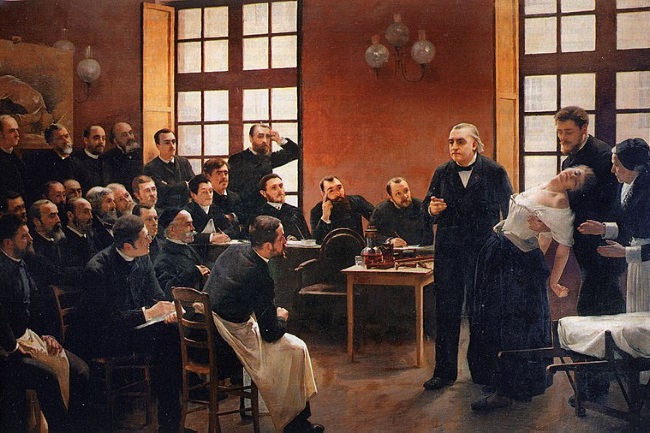In our latest happiness coaching article Gaëlle Jadoul and Christophe Finot delve into one of history’s most fascinating healing and health practices.
You may think you know everything about hypnosis, from the therapist’s chair to the fascination of hypnosis featured on the screen, but what if hypnosis enables you to enter a new dimension?
In this first article, we take you on a journey of discovery of hypnosis at the therapeutic level.
“… You are comfortably seated, breathing at your own pace… keep your eyes open
… There is nothing to do but let it happen…”
The human brain works continuously throughout our lives, even just to regulate our vital functions so we do not need to think about breathing. Hypnosis allows us to access the unconscious mind and make full use of it.
Defining hypnosis
Hypnosis is nothing new, but its definition has travelled through time and different therapists refer to it by different names.
‘Hypnos’ is the Greek word for sleep. This is the etymology of all clinical phenomena related to sleep.
Officially, the term ‘hypnosis’ designates both ‘a modified state of consciousness’, in other words a particular state of consciousness, between wakefulness and sleep, and the set of techniques used to achieve this state of consciousness.
A little history…
In ancient history, hypnosis was practised under other names in the temples of sleep, from Egypt to ancient Greece, as well as by the Druids among the ancient Celts.
In Egypt, Pharaoh Ramses II (born 1304 BC) used hypnotic techniques to motivate soldiers before going into battle and Socrates in Greece excelled in the practice of conversational hypnosis.
Hypnosis is not based on myths or misconceptions, it is a very real process that can be used as a therapeutic tool and these few important dates and names will show you how it came to be what we know it as today.
In 1750s Europe, Franz Anton Mesmer was convinced that an invisible magnetic fluid radiated into the universe. Certain diseases were due to an imbalance of this fluid in the body and could therefore be cured by restoring this magnetic balance, according to Mesmer.
In 1840, British doctor James Braid proposed the mechanism of physiological focusing: prolonged fixation of the gaze on a bright object slightly above the normal line of the eyes, which provoked a sleep-like state that he called ‘trance’. He was also the first person to propose the name ‘hypnosis’.
Sigmund Freud (1856–1939) developed the concept of the unconscious and initiated clinical hypnosis to combat purely functional nervous disorders, psychic ailments and toxic or other addictions.
In 1930, a fantastic advance in hypnosis was made by Milton Erickson. He showed the effectiveness of the metaphorical dimension of hypnosis and the learning capacity of the unconscious.
In 1979, American professor D. Araoz created modern hypnosis or ‘New Hypnosis’. This used Ericksonian hypnosis, but added neuro-linguistic programming, neuroscience, sociology and psychopathology.
The 2000s saw conversational hypnosis, completed modern hypnosis and humanistic hypnosis. Hybrid hypnosis, somewhere between European psychotherapy – based on an understanding of the unconscious – and American solution-focused (brief) therapy (SFBT) – generated rapid and very conclusive results. The process is said to allow access to the subconscious mind through the imagination.

The fields of application
According to the ‘hypnotic suggestibility’ scale developed by Stanford University (USA), 5% of people are resistant to hypnosis and only 10% manage to enter a state of deep hypnosis quickly.
Our experience allows us to maintain that every person is hypnotisable, and as each person is different, we adapt our technique accordingly to put them in a trance. At the start, we assess the hypnotic receptivity of our clients before going further into the therapeutic work.
“… There is no right or wrong way to enter this trance state, there is yours, the one that suits you and in the same way, every trance has its own trance…”
The practice of hypnosis is beneficial for young children, teenagers, students and adults alike as it helps to, among others:
• Increase your self-confidence and assertiveness
• Change inappropriate, maladaptive behaviour
• Reprogramme any limiting beliefs, blocks or negative conditioning
• Remove fears, phobias and anxieties
• Overcome addictions (tobacco, alcohol…)
• Manage emotions, stress, depression, insomnia, burn-out
• Deal with emotional shocks and traumas
• Learn to manage weight problems and eating disorders
Please note: Hypnosis does not work for people with severe psychiatric disorders (paranoia, schizophrenia, psychosis or epilepsy), severe heart problems or withdrawal from hard drugs.
So how does it work?
A hypnosis session involves four phases:
• The establishment of trust and validation of the therapeutic work.
• Induction or putting the person into a trance.
• The therapeutic phase where through the use of suggestions and metaphorical images the practitioner makes clients experience another way of perceiving their reality, of experiencing things differently while respecting their request in phase 1.
• The return to the ordinary state of consciousness including post-hypnotic suggestions where all new behaviours, abilities, beliefs or even a new identity are integrated by the client.
But before we get to this point, it is important to understand how the brain works and in particular the role of the two hemispheres: the left and the right.
The left hemisphere is associated with the conscious state and participates in rationality, reasoning and logical analysis, whereas the right hemisphere is the seat of the unconscious which gives free rein to imagination, emotions, creativity and innate gifts.
To induce a Modified State of Consciousness, it is necessary to put the left side of the brain to ‘sleep’ and to divert the conscious attention by forcing the brain to concentrate on something else.
Let us take a closer look…
In a hypnotic state, the person often feels relaxation, well-being, and enters a state of expanded consciousness, i.e. in his or her worlds of perception, which can be olfactory, auditory, visual, etc. At this stage, the person’s attention can be focused on a given element – their pain for example. The state of hypnosis is then close to dreams and leaves the rational logic. The practitioner can then suggest that the client applies an imaginary ointment to the painful area to reduce its intensity. In this last step, the client will feel an improvement of their condition in the painful area, which will transpose them into a perceptive reality.
In the same way, a client with a phobia of spiders will be able to dissociate from the phobia and then visualise a new reality in which the spiders are present but no longer arouse a phobia.
As for addictions, the work phases are more numerous and time is a key factor, with each client integrating these stages at their own pace.
We look forward to seeing you in the next article, which will extend your immersion into the heart of hypnosis.
“You can come back to the here and now, completely reassociated and in great shape, having completely integrated the experience…”
For more information:
Please contact Gaëlle Jadoul, Hypnosis and Happiness Coach: +32 479 352 606 or at g@gaellesecrets.com or Christophe Finot, Energy and Happiness Coach: +33 621 318 329 or at c@gaellesecrets.com.







